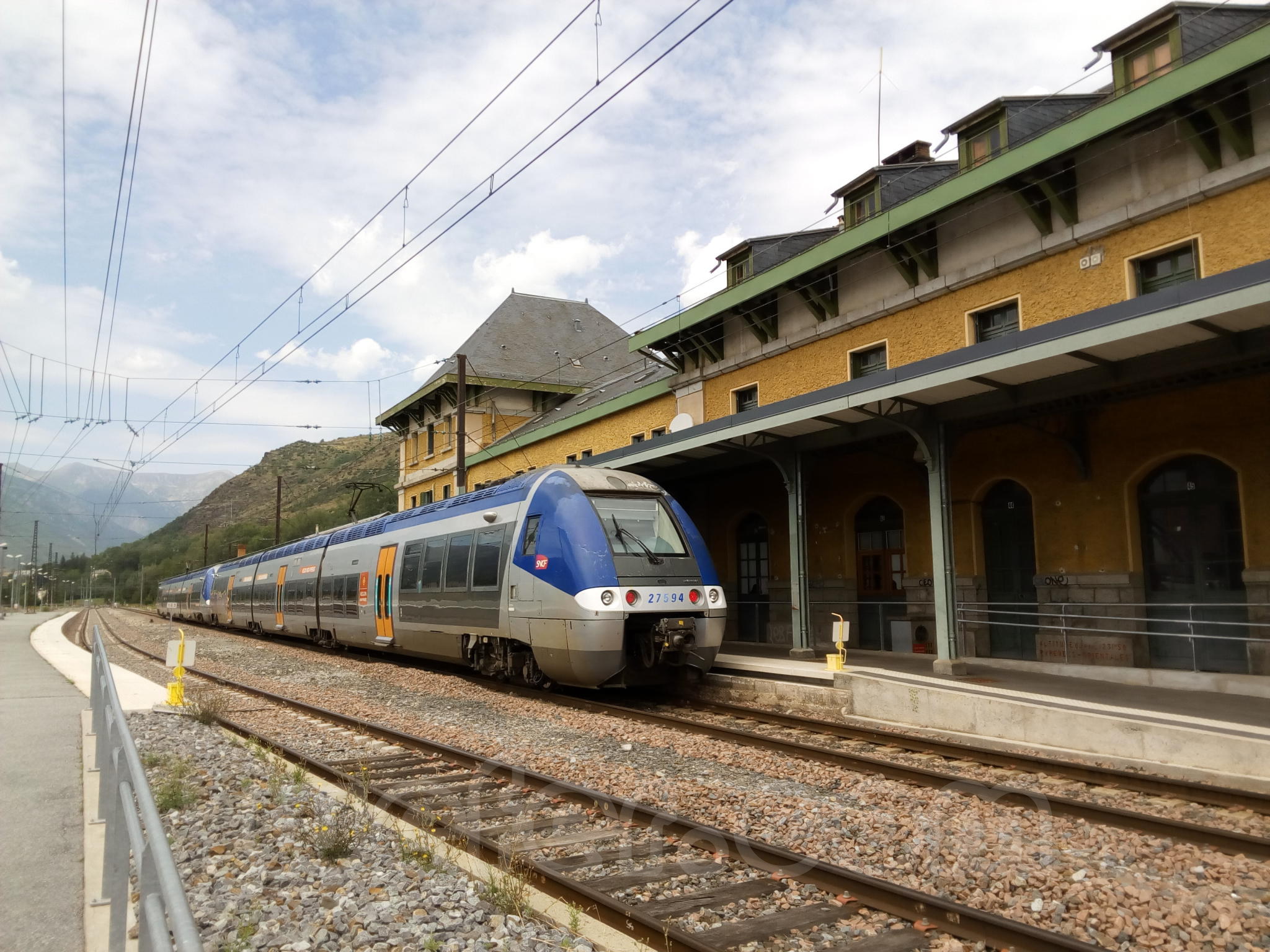
SNCF: estació de La Tor de Querol (Latour-de-Carol-Enveitg)
Inicio --> SNCF --> línea La Tor de Querol / Foix / Toulouse --> La Tor de Querol
Inicio --> SNCF --> línea La Tor de Querol / Vilafranca de Conflent / Perpinyà --> La Tor de Querol (Latour-de-Carol-Enveitg)
Idioma / Language >
La Torre de Querol-Enveig, oficialmente llamada Latour-de-Carol-Enveitg en francés, representa una infraestructura ferroviaria clave en la Cataluña Norte. Situada en la Alta Cerdanya, específicamente dentro de la comuna de Envejo, esta estación sirve como nodo transfronterizo entre España y Francia.
A una altitud de 1.232 metros, la estación se encuentra a un punto geográficamente estratégico, ofreciendo conectividad entre diversas regiones y sirve como plataforma de transición entre distintos sistemas ferroviarios europeos.
El desarrollo de la línea ferroviaria a través del Ariège comenzó con el tren que llegó a Tarascon en 1877 y después en Ax les Thermes en 1888. Sin embargo, la continuación del proyecto hasta Latour de Carol se vio retrasada.
El acuerdo internacional necesario para este tramo no se firmó hasta 1904, y los trabajos se enfrentaron a múltiples desafíos técnicos, incluyendo la compleja topografía de la región, la construcción de un extenso túnel en Puymorens de más de 5 kilómetros de largo, y los trastornos causados por la Primera Guerra Mundial.
A pesar de que las dos entradas del túnel se completaron en Navidad de 1914, el resto de las infraestructuras de la línea no se finalizaron hasta 1923. Los trenes de Renfe empezaron a operar hasta Latour de Carol el 5 de junio de 1928, y casi un año después, el 22 de julio de 1929, los trenes franceses llegaron a la estación, ya en servicio eléctrico.
Configuración técnica
La singularidad de La Tor de Querol-Enveig radica en su configuración de vías, que incorpora tres anchos de vía diferentes. Éstas son:
- Ancho Internacional (UIC): 1,435 metros. Utilizado principalmente por la línea Portet-Saint-Simon – Puigcerdà que se dirige hacia Tolosa de Languedoc, electrificada a 1.500 voltios DC mediante catenaria.
- Ancho Métrico: 1,000 metros. Perteneciente a la línea del Tren Amarillo que se dirige a Vilafranca de Conflent, utiliza un sistema de tercer raíl lateral y está electrificada a 850 voltios DC.
- Ancho Ibérico: 1,668 metros. Este ancho es usado en la línea que conecta Ripoll con Puigcerdà, también electrificada a 3.000 voltios DC por catenaria.
Esta diversidad de anchos permite que la estación funcione como un centro de intercambio único en Europa, gestionando interconexiones entre trenes de diferentes regiones con distintos requerimientos técnicos.
Servicios y operaciones
El complejo de la estación consta de un edificio de viajeros de múltiples plantas que alberga servicios esenciales como taquillas, un quiosco, servicios sanitarios, además de un bar y un restaurante. El diseño del edificio tiene en cuenta la facilidad de acceso y comodidad de los viajeros, situándose a la derecha de las vías cuando se mira hacia Toulouse.
La estación dispone de dos andenes principales: una cubierta asociada con el edificio de viajeros y una secundaria, descubierta y en condiciones más precarias. El andén principal sirve las vías del ancho internacional e ibérico, mientras que el andén secundario se utiliza para las vías del ancho métrico.
La estación dejó de recibir mercancías oficialmente el 12 de diciembre de 2004.
Las vías de la estación están estratégicamente distribuidas para optimizar las operaciones y la logística de movimiento de los trenes. La vía de ancho internacional está destinada a ser el punto de partida para las circulaciones de SNCF hacia Francia, mientras que el ancho ibérico acoge los trenes que llegan de Barcelona, con los trenes de Renfe Operadora. El ancho métrico está dedicado exclusivamente al Tren Amarillo, proporcionando una ruta pintoresca a través de la Cerdanya.
Número de viajeros
Según datos oficiales de SNCF, el número de viajeros de esta estación sigue una tónica irregular pero con tendencia al crecimiento:
- Año 2015: 51.611 viajeros.
- 2016: 48.806 viajeros.
- 2017: 49.671 viajeros.
- 2018: 47.425 viajeros.
- 2019: 56.705 viajeros.
- 2020: 37.219 viajeros.
- 2021: 53.545 viajeros.
- 2022: 76.304 viajeros.
Conclusión
La estación de Latour de Carol se construyó con la intención de ser una estación emblemática en la frontera entre Francia y España. Sin embargo, no llegó a tener el impacto esperado y la línea acabó teniendo únicamente un uso local. Su supuesta función internacional no ha pasado de ser más que una ilusión.
Las disparidades técnicas empezando por el ancho de vía, junto con la falta de coordinación en los horarios—seis viajes de ida y vuelta desde el lado francés y cuatro desde el lado español, sin ningún enlace entre ellos—reflejan la falta de interés tanto de las autoridades españolas como de las francesas por convertir esta línea en una verdadera conexión
Fotografías de la estación de La Tor de Querol (Latour-de-Carol-Enveitg)
La Tor de Querol-Enveig, oficialment anomenada Latour-de-Carol-Enveitg en francès, representa una infraestructura ferroviària clau en la Catalunya Nord. Situada a l'Alta Cerdanya, específicament dins de la comuna d'Enveig, aquesta estació serveix com a node transfronterer entre Espanya i França.
A una altitud de 1.232 metres, l'estació es troba a un punt geogràficament estratègic, oferint connectivitat entre diverses regions i serveix com a plataforma de transició entre diferents sistemes ferroviaris europeus.
El desenvolupament de la línia ferroviària a través de l'Ariège va començar amb el tren que va arribar a Tarascon el 1877 i després a Ax les Thermes l'any 1888. No obstant això, la continuació del projecte fins a Latour de Carol es va veure retardada.
L'acord internacional necessari per a aquest tram no es va signar fins a 1904, i els treballs van enfrontar-se a múltiples desafiaments tècnics, incloent la complexa topografia de la regió, la construcció d'un extens túnel a Puymorens de més de 5 quilòmetres de llargària, i els trastorns causats per la Primera Guerra Mundial.
Malgrat que les dues entrades del túnel es van completar per Nadal de 1914, la resta de les infraestructures de la línia no es van finalitzar fins a 1923. Els trens de Renfe van començar a operar fins a Latour de Carol el 5 de juny de 1928, i gairebé un any després, el 22 de juliol de 1929, els trens francesos van arribar a l'estació, ja en servei elèctric.
Configuració tècnica
La singularitat de La Tor de Querol-Enveig rau en la seva configuració de vies, que incorpora tres amples de via diferents. Aquestes són:
- Ample Internacional (UIC): 1,435 metres. Utilitzat principalment per la línia Portet-Saint-Simon – Puigcerdà que es dirigeix cap a Tolosa de Llenguadoc, electrificada a 1.500 volts DC mitjançant catenària.
- Ample Mètric: 1,000 metres. Pertanyent a la línia del Tren Groc que es dirigeix a Vilafranca de Conflent, utilitza un sistema de tercer rail lateral i està electrificada a 850 volts DC.
- Ample Ibèric: 1,668 metres. Aquest ample és usat en la línia que connecta Ripoll amb Puigcerdà, també electrificada a 3.000 volts DC per catenària.
Aquesta diversitat d'amples permet que l'estació funcioni com un centre d'intercanvi únic a Europa, gestionant interconnexions entre trens de diferents regions amb diferents requeriments tècnics.
Serveis i operacions
El complex de l'estació consta d'un edifici de viatgers de múltiples plantes que allotja serveis essencials com taquilles, un quiosc, serveis sanitaris, a més d'un bar i un restaurant. El disseny de l'edifici té en compte la facilitat d'accés i la comoditat dels viatgers, situant-se a la dreta de les vies quan es mira cap a Toulouse.
L'estació disposa de dues andanes principals: una coberta associada amb l'edifici de viatgers i una secundària, descoberta i en condicions més precàries. L'andana principal serveix les vies de l'ample internacional i ibèric, mentre que l'andana secundària s'utilitza per a les vies de l'ample mètric.
L'estació va deixar de rebre mercaderies oficialment el 12 de desembre de 2004.
Les vies de l'estació estan estratègicament distribuïdes per optimitzar les operacions i la logística de moviment dels trens. La via d'ample internacional està destinada a ser el punt de partida per a les circulacions de SNCF cap a França, mentre que l'ample ibèric acull els trens que arriben de Barcelona, amb els trens de Renfe Operadora. L'ample mètric està dedicat exclusivament al Tren Groc, proporcionant una ruta pintoresca a través de la Cerdanya.
Nombre de Viatgers
Segons dades oficials de SNCF, el nombre de viatgers d'aquesta estació segueix una tònica irregular però amb tendència al creixement:
- Any 2015: 51.611 viatgers.
- 2016: 48.806 viatgers.
- 2017: 49.671 viatgers.
- 2018: 47.425 viatgers.
- 2019: 56.705 viatgers.
- 2020: 37.219 viatgers.
- 2021: 53.545 viatgers.
- 2022: 76.304 viatgers.
Conclusió
L'estació de Latour de Carol es va construir amb la intenció de ser una estació emblemàtica a la frontera entre França i Espanya. Tot i això, no va arribar a tenir l'impacte esperat i la línia va acabar tenint únicament un ús local. La seva suposada funció internacional no ha passat de ser més que una il·lusió.
Les disparitats tècniques començant per l'ample de via, juntament amb la falta de coordinació en els horaris—sis viatges d'anada i tornada des del costat francès i quatre des del costat espanyol, sense cap enllaç entre ells—reflexen la manca d'interès tant de les autoritats espanyoles com de les franceses per convertir aquesta línia en una veritable connexió internacional que pugui servir eficaçment a la regió.
Fotografies de l'estació de La Tor de Querol (Latour-de-Carol-Enveitg)
La Tor de Querol-Enveig, officially called Latour-de-Carol-Enveitg in French, represents a key railway infrastructure in Northern Catalonia. Located in Upper Cerdanya, specifically within the municipality of Enveig, this station serves as a cross-border node between Spain and France.
At an altitude of 1,232 meters, the station is located at a geographically strategic point, offering connectivity between various regions and serving as a transition platform between different European railway systems.
The development of the railway line through the Ariège began with the train arriving at Tarascon in 1877 and then at Ax les Thermes in 1888. However, the continuation of the project to Latour de Carol was delayed.
The international agreement necessary for this section was not signed until 1904, and the work faced multiple technical challenges, including the complex topography of the region, the construction of an extensive tunnel in Puymorens de more than 5 kilometers long, and the disturbances caused by the First World War.
Although the two tunnel entrances were completed by Christmas 1914, the rest of the line's infrastructure was not completed until 1923. Renfe trains began operating to Latour de Carol on 5 June 1928, and almost a year later, on July 22, 1929, the French trains arrived at the station, already in electric service.
Technical configuration
The uniqueness of La Tor de Querol-Enveig lies in its track configuration, which incorporates three different track widths. These are:
- International width (UIC): 1,435 meters. Mainly used by the Portet-Saint-Simon – Puigcerdà line which heads towards Toulouse de Llenguadoc, electrified at 1,500 volts DC via catenary.
- Metric Width: 1,000 meters. Belonging to the Yellow Train line that goes to Vilafranca de Conflent, it uses a third side rail system and is electrified at 850 volts DC.
- Iberic width: 1,668 meters. This width is used in the line that connects Ripoll with Puigcerdà, also electrified at 3,000 volts DC per catenary.
This diversity of gauges allows the station to function as a unique interchange center in Europe, managing interconnections between trains from different regions with different technical requirements.
Services and operations
The station complex consists of a multi-storey passenger building housing essential services such as ticket offices, a kiosk, health services, as well as a bar and restaurant. The design of the building takes into account the ease of access and the comfort of travelers, being located to the right of the tracks when looking towards Toulouse.
The station has two main platforms: a covered one associated with the passenger building and a secondary one, uncovered and in more precarious conditions. The main platform serves international and Iberian gauge tracks, while the secondary platform is used for metric gauge tracks.
The station officially stopped receiving goods on December 12, 2004.
The station's tracks are strategically distributed to optimize operations and train movement logistics. The international gauge track is destined to be the starting point for SNCF traffic towards France, while the Iberian gauge welcomes trains arriving from Barcelona, with Renfe Operadora trains. The metric gauge is dedicated exclusively to the Yellow Train, providing a picturesque route through Cerdanya.
Number of Passengers
According to official SNCF data, the number of passengers at this station follows an irregular but upward trend:
- Year 2015: 51,611 travelers.
- 2016: 48,806 travelers.
- 2017: 49,671 travelers.
- 2018: 47,425 travelers.
- 2019: 56,705 travelers.
- 2020: 37,219 travelers.
- 2021: 53,545 travelers.
- 2022: 76,304 travelers.
Conclusion
Latour de Carol station was built with the intention of being an emblematic station on the border between France and Spain. However, it did not have the expected impact and the line ended up having only local use. Its supposed international function has become nothing more than an illusion.
Technical disparities starting with track width, together with the lack of coordination in timetables—six round trips from the French side and four from the Spanish side, with no connection between them—reflect the lack of interest from both the Spanish and French authorities to turn this line into a real connection
Photos of La Tor de Querol station (Latour-de-Carol-Enveitg)
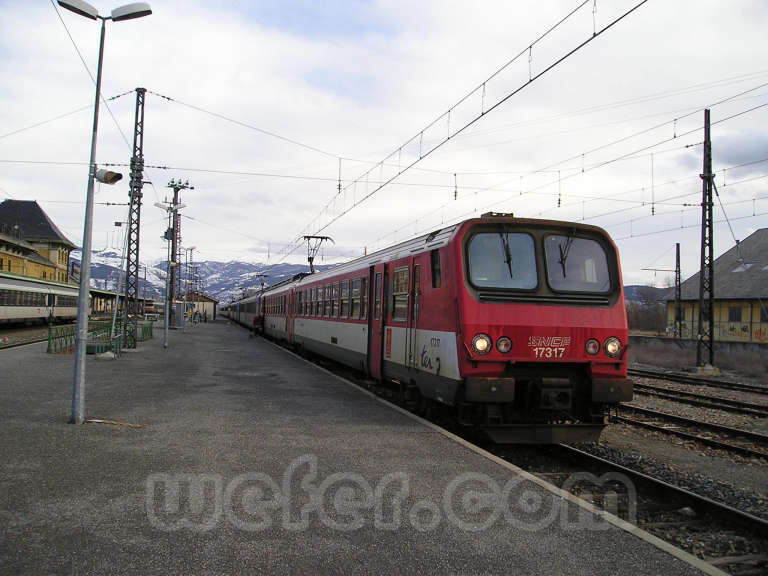
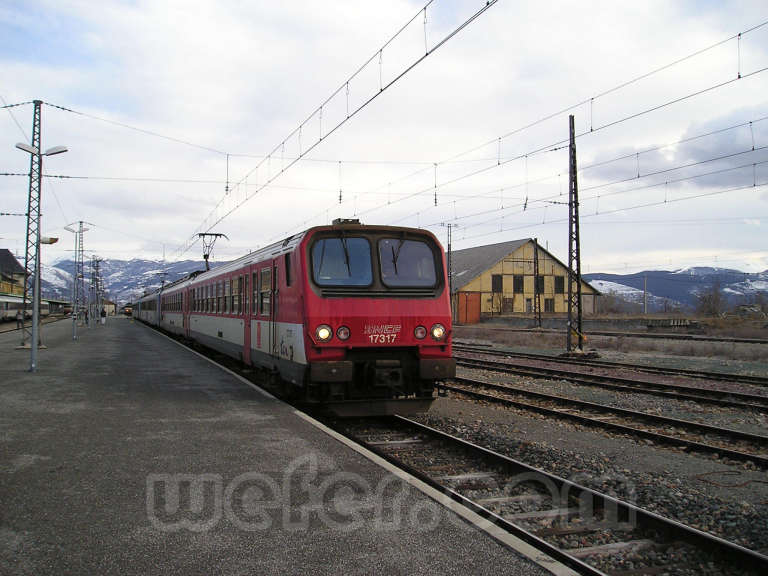
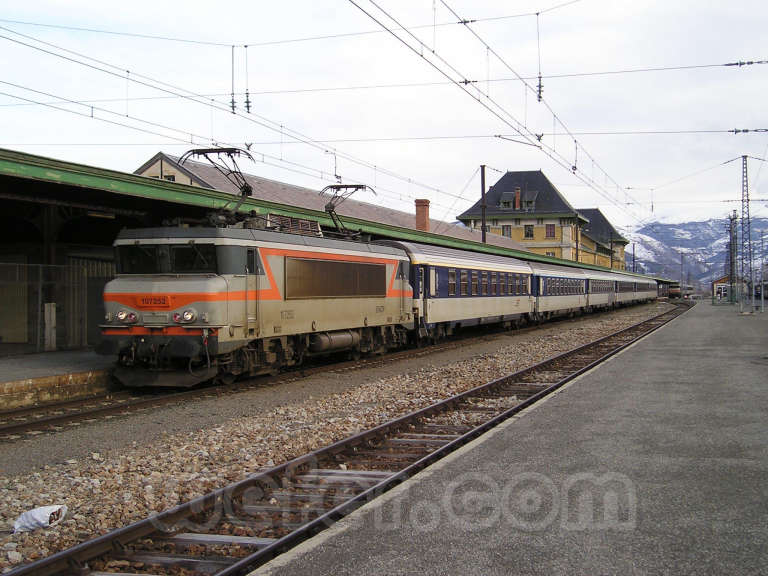
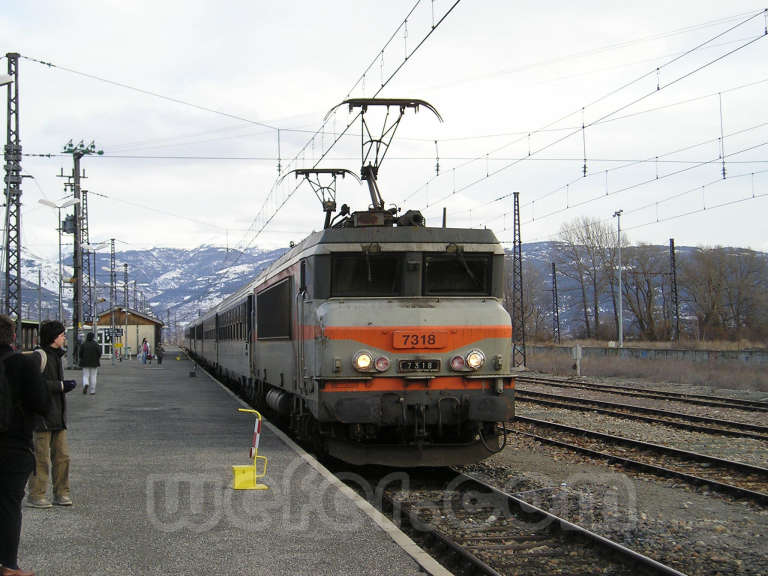
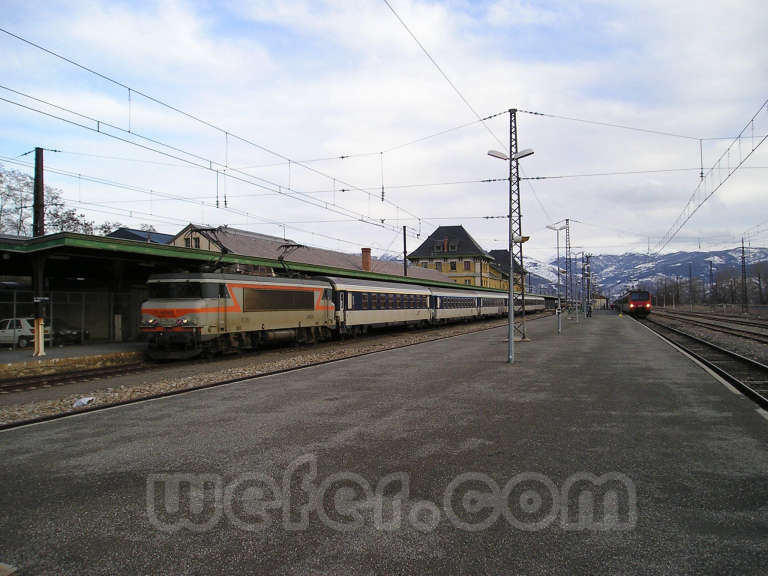
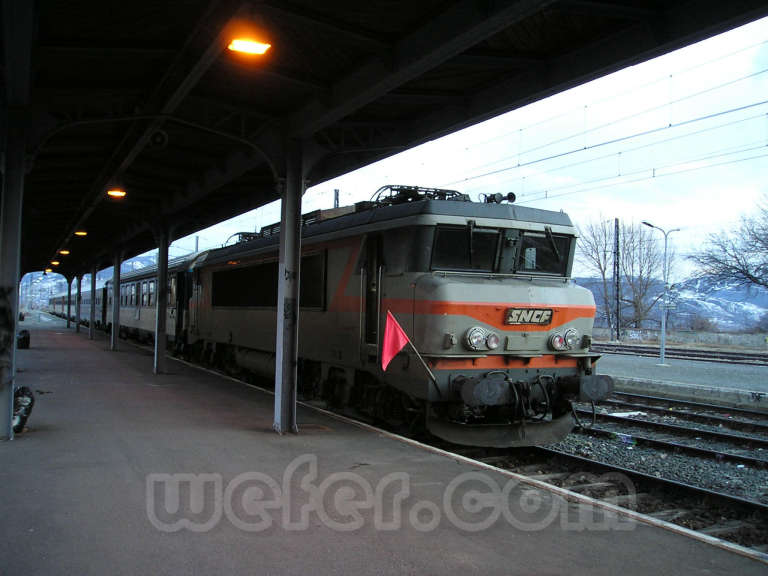
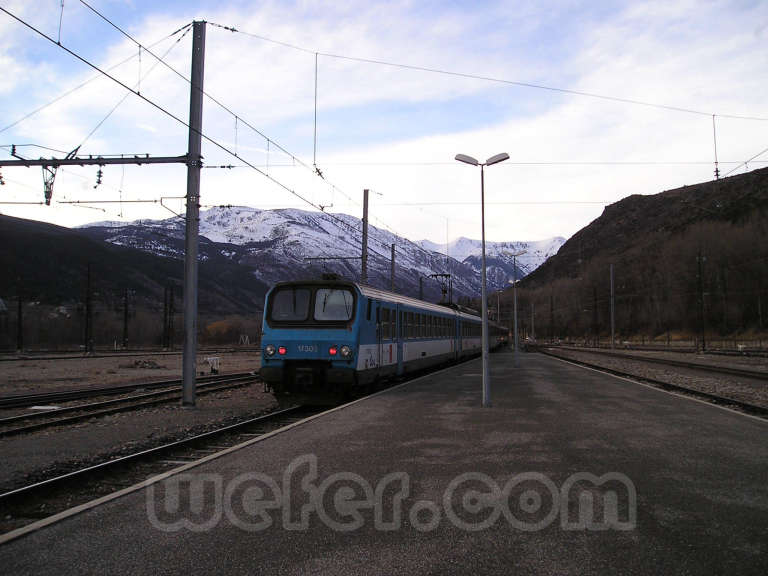
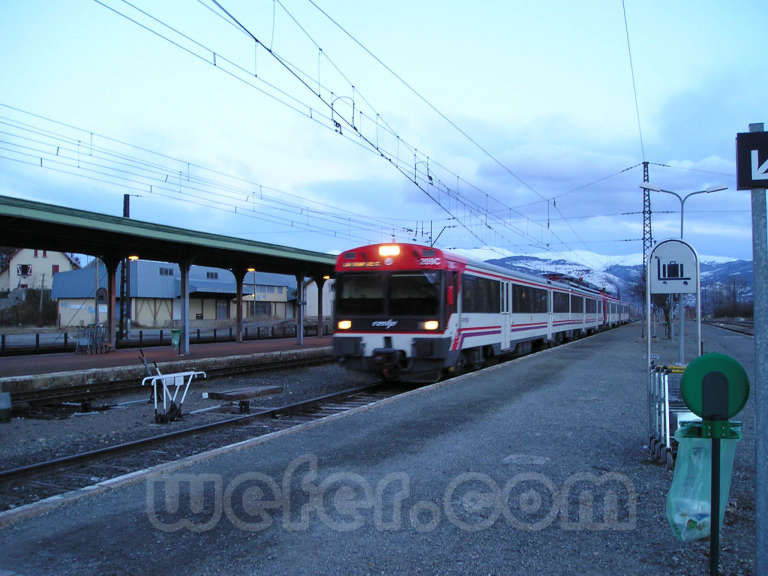
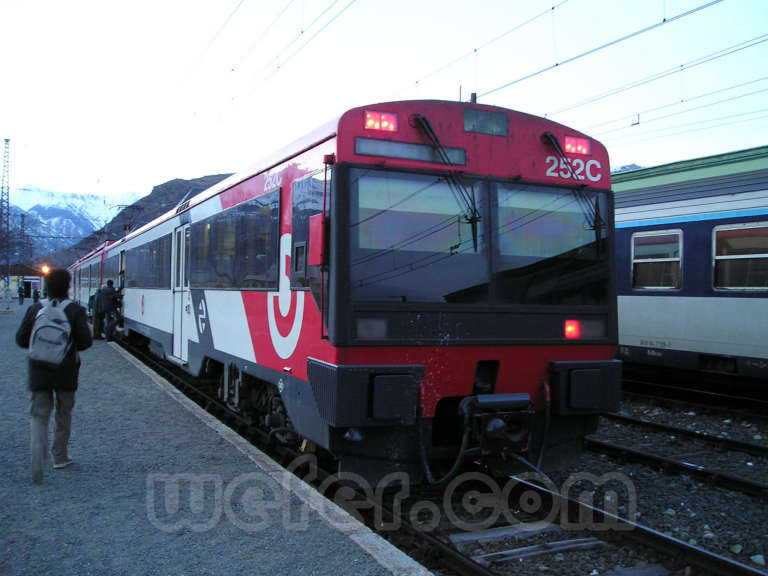
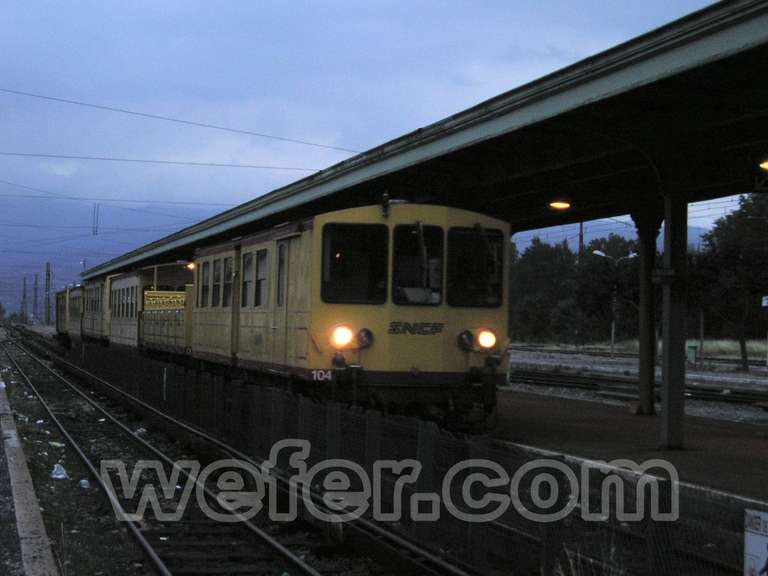
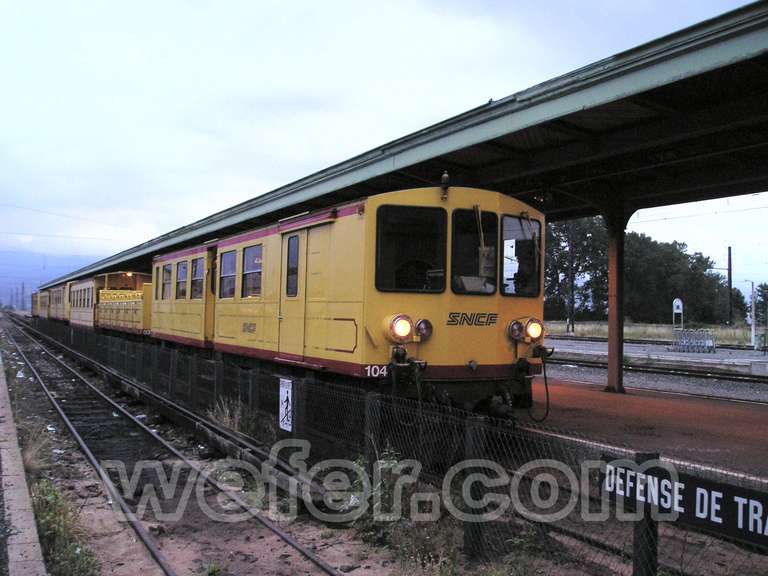
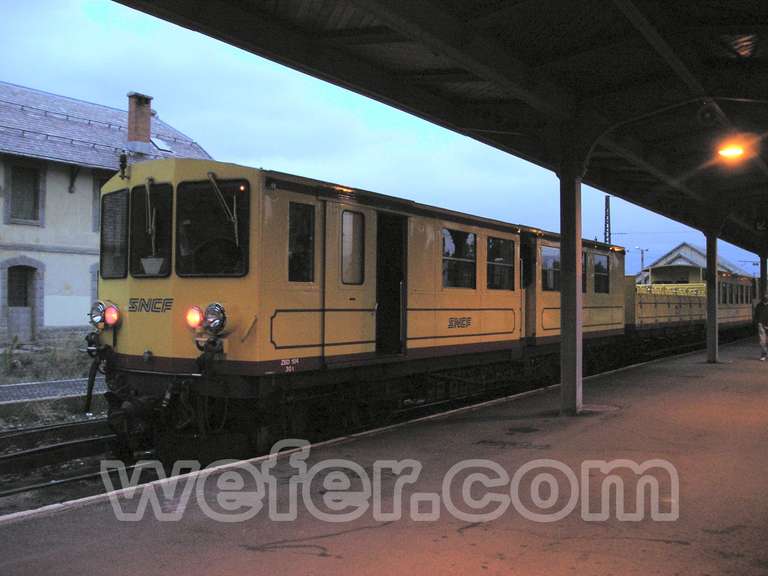
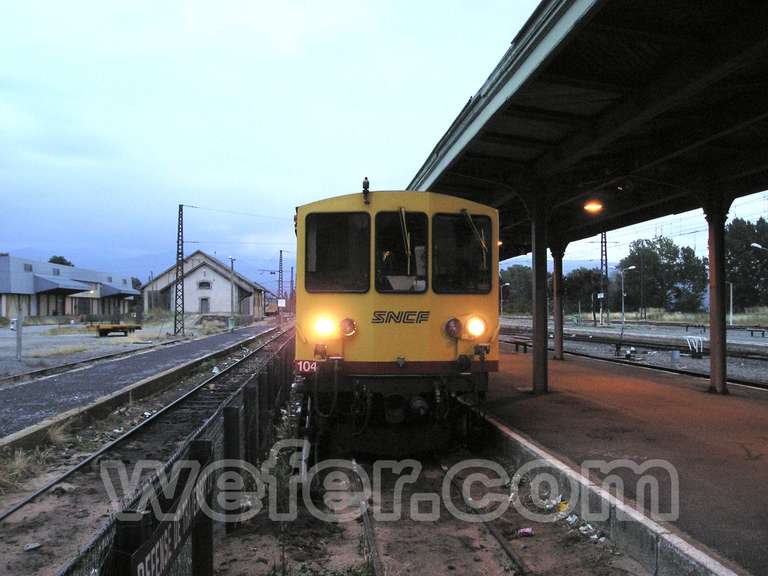
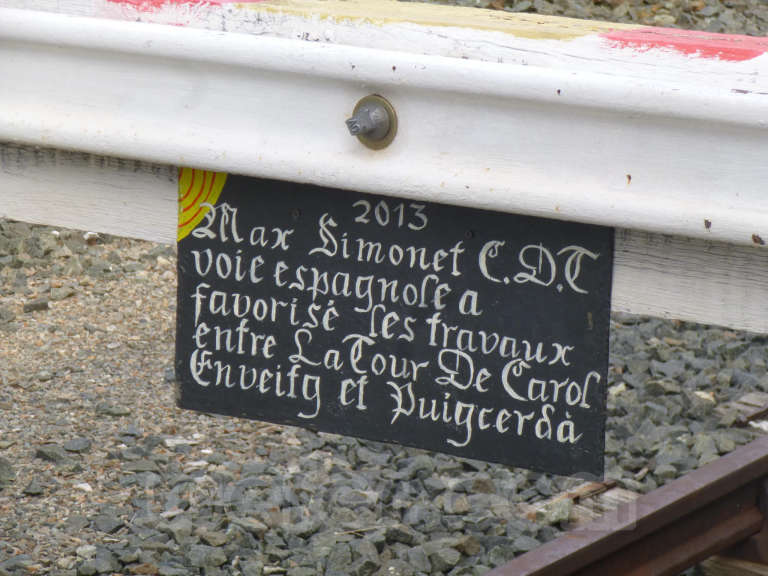
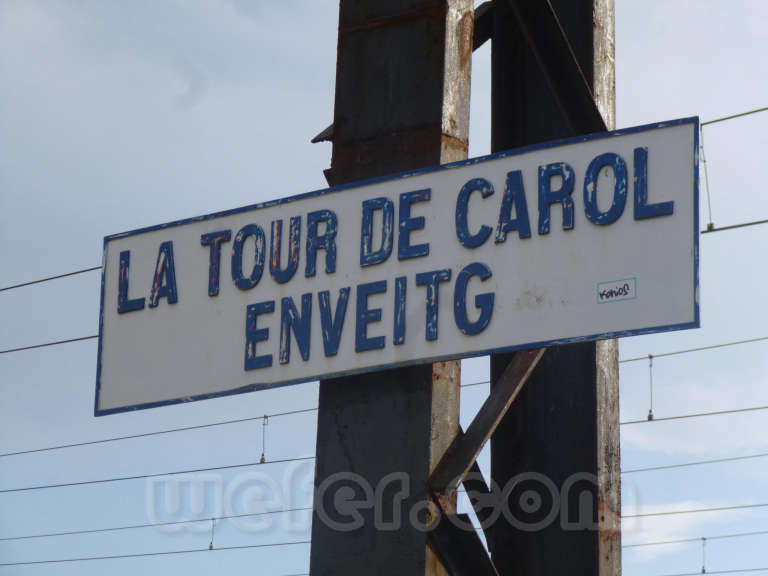
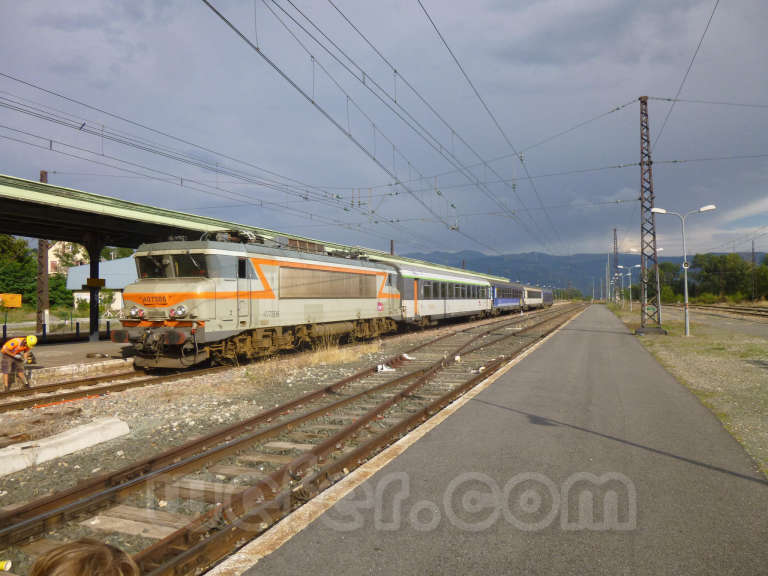
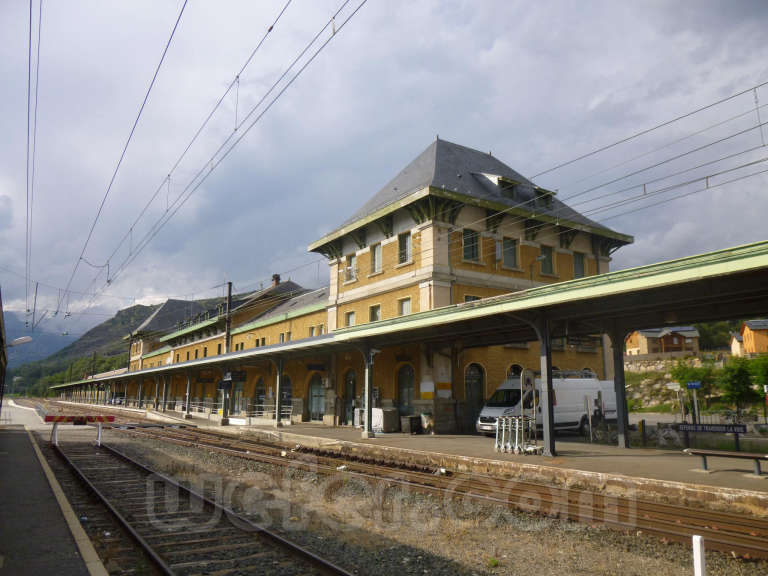
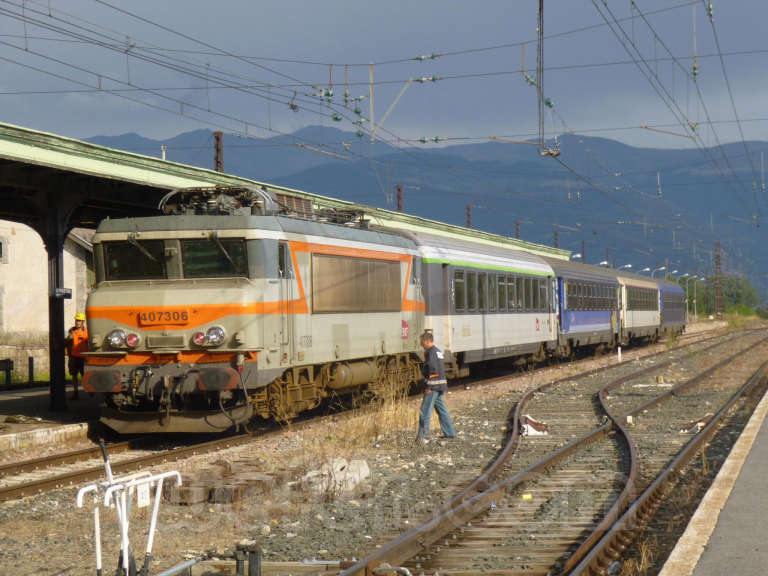
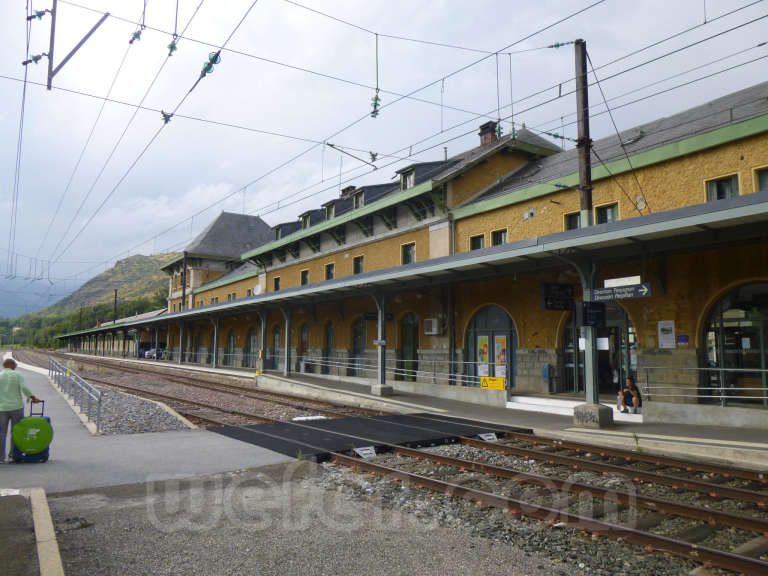
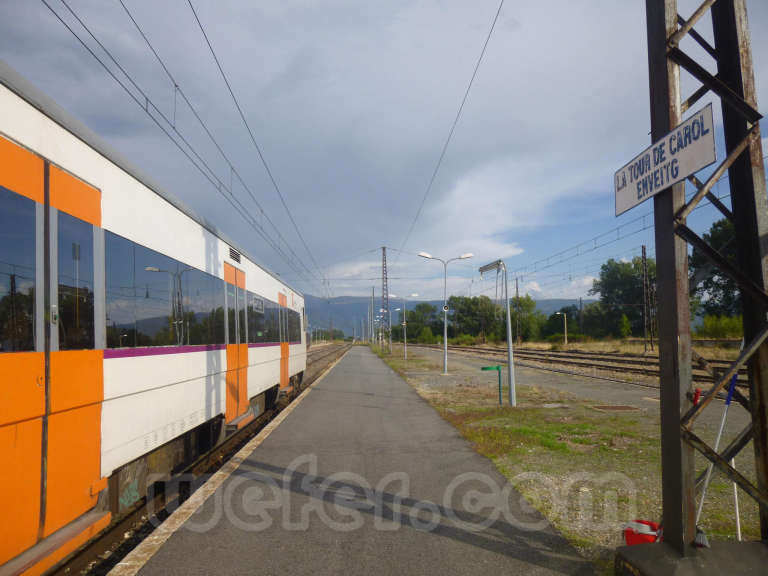
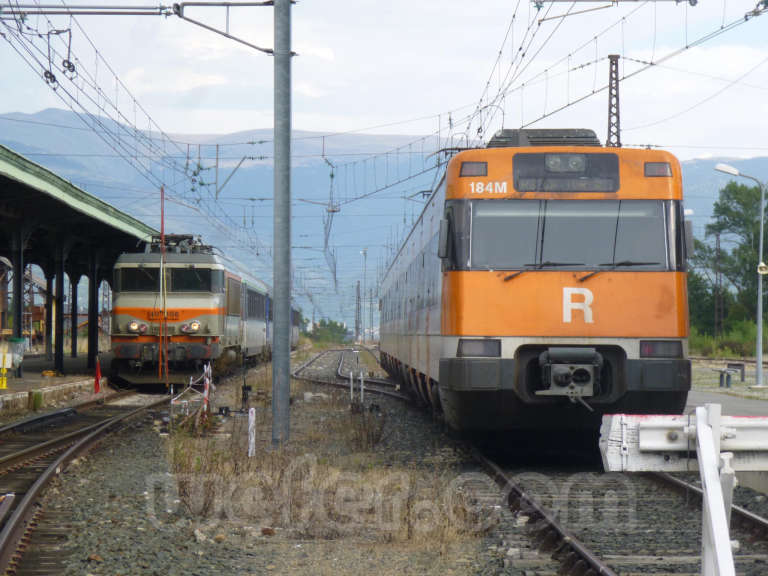
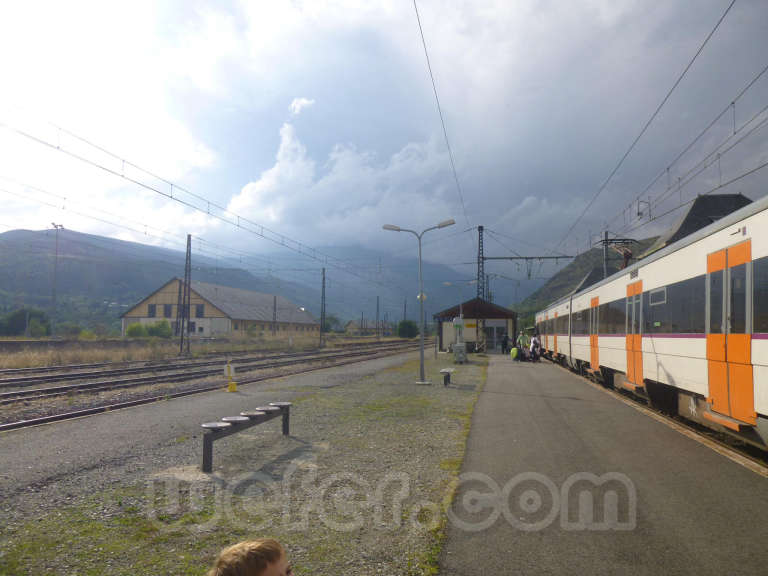
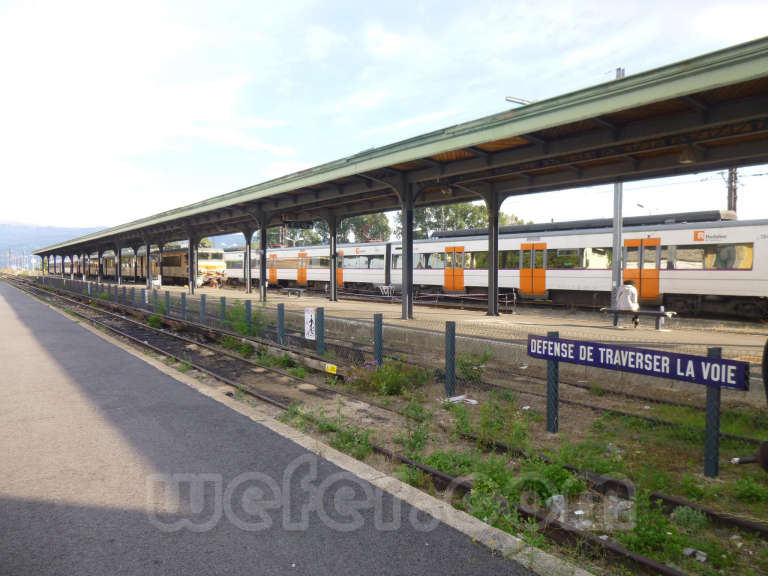
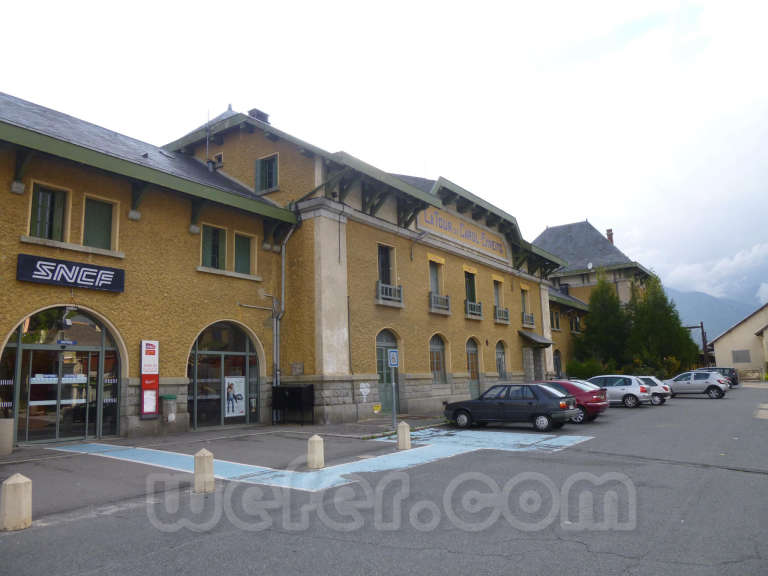
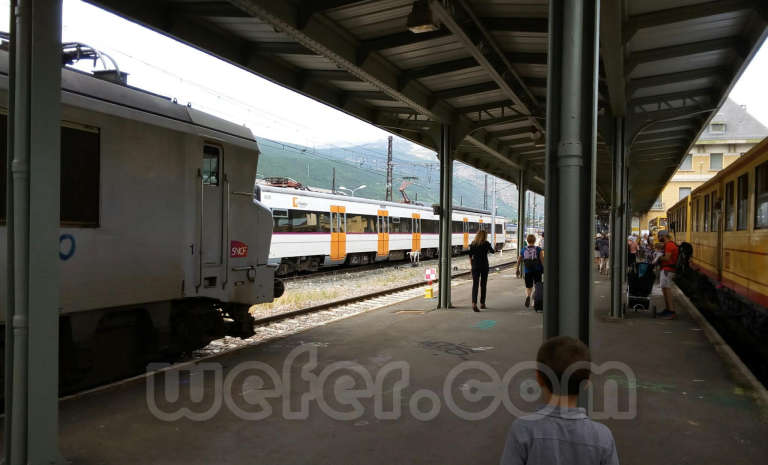
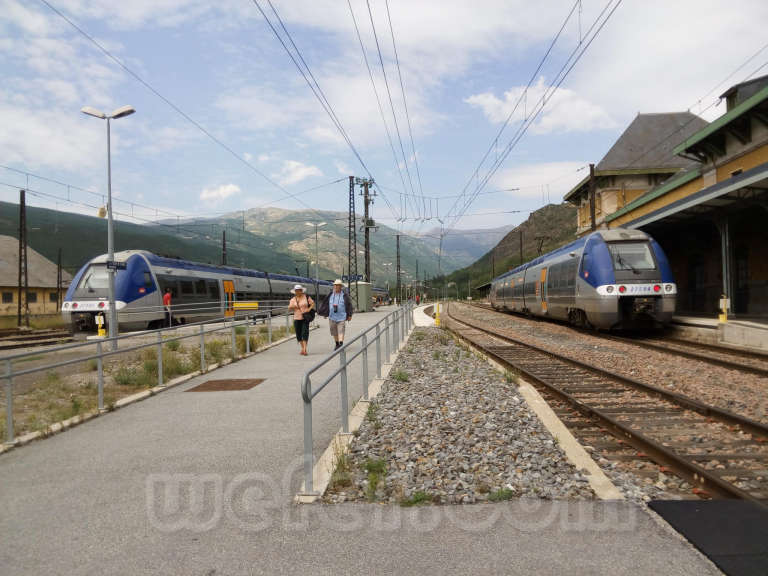
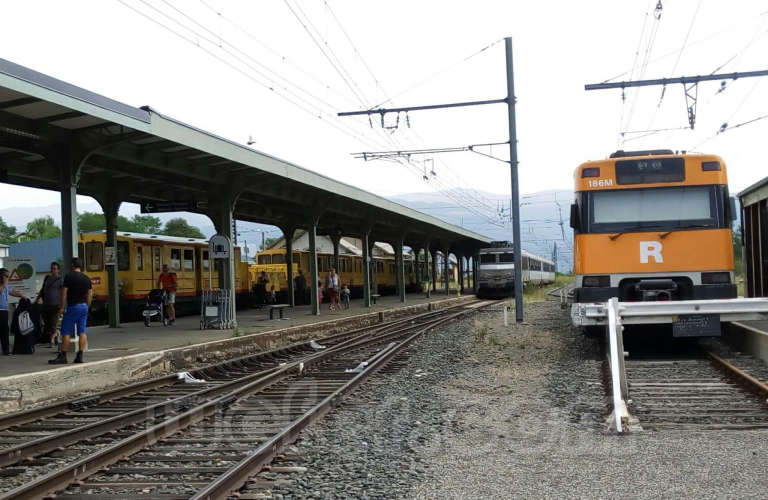
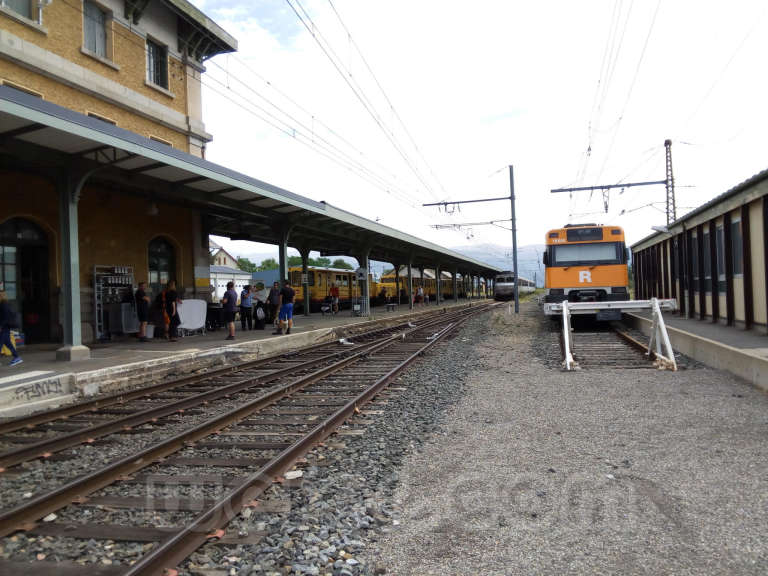
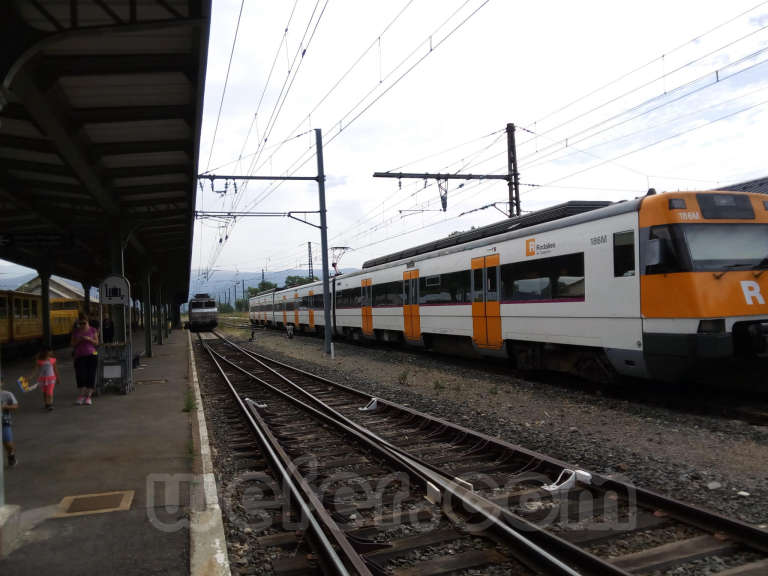
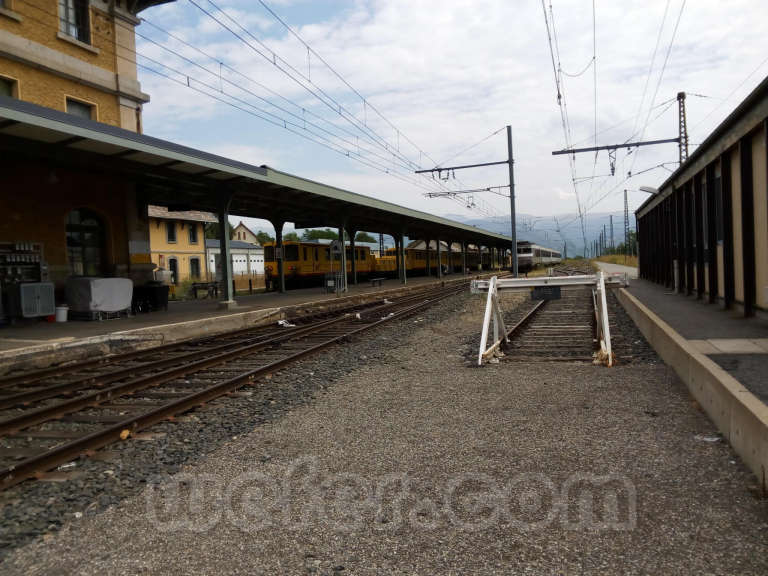
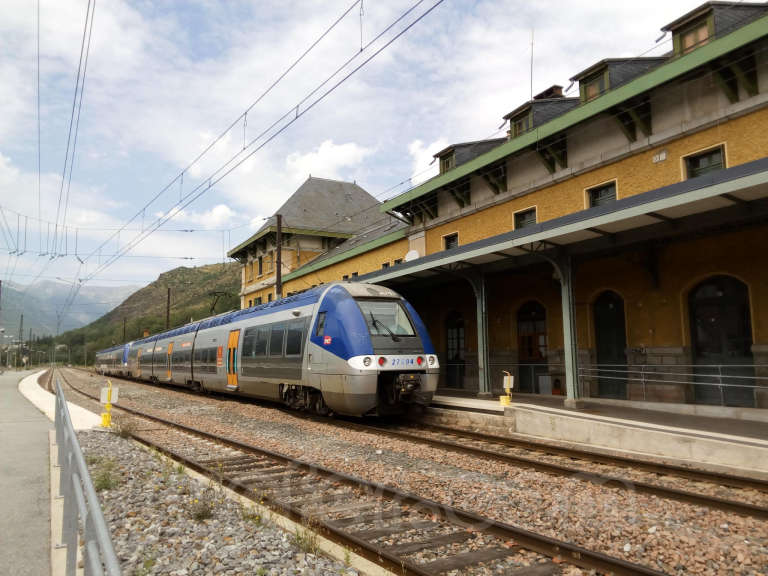
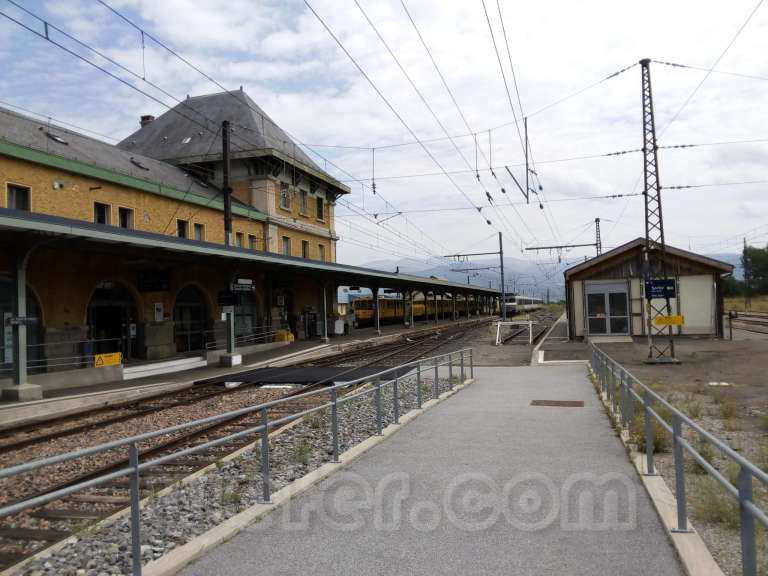
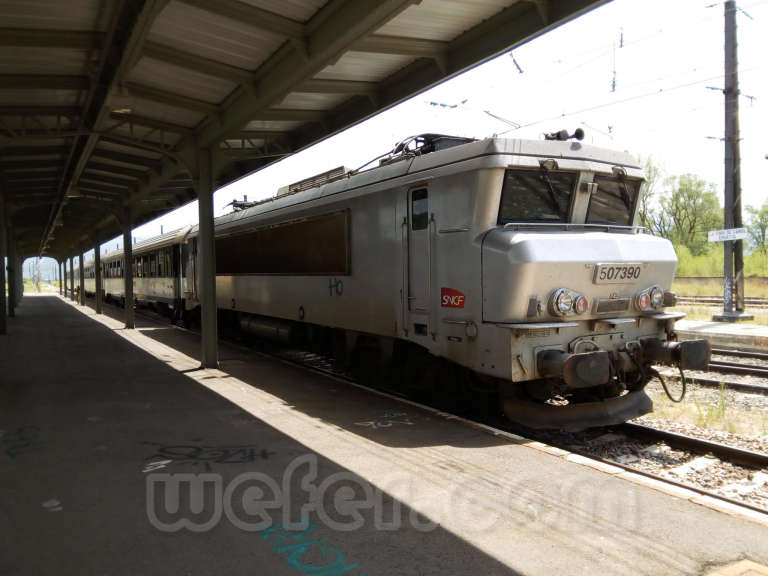
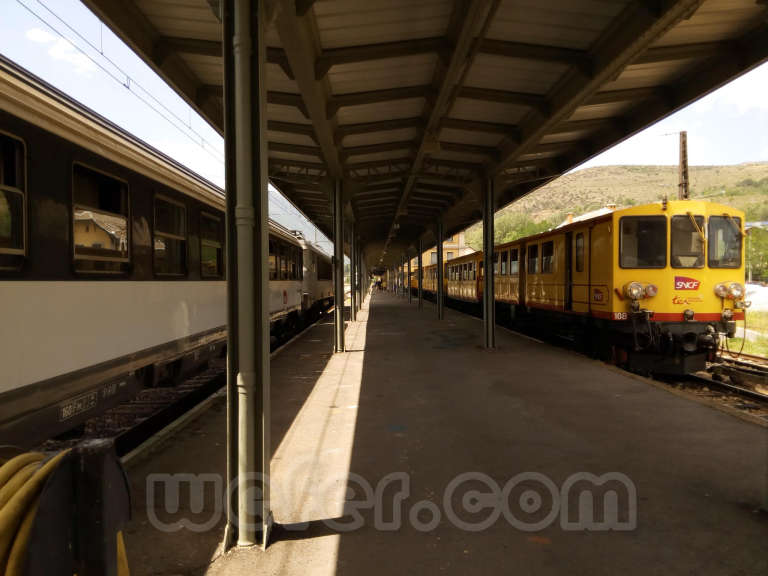
Més informació
- El Transpirenaico oriental - iGuadix
- Toulouse - Latour de Carol : l'espoir d'un transpyrénéen
- Trenscat - La Tor de Querol Enveig
- Ferropedia - Estación de La Tor de Querol-Enveig
- Viquipèdia - Estació de la Tor de Querol
Estaciones colaterales:
Estaciones colaterales:

